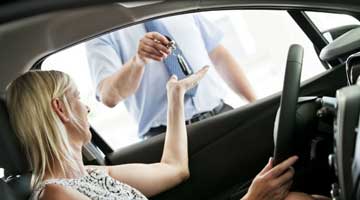Whether it brings back childhood memories of I Spy in the backseat, or you just enjoy the thrill of exploring, there’s something special about heading out on a driving holiday. With the sunshine comes a new set of obstacles to contend with - from busier roads to keeping the kids entertained on long journeys.
Here, AXA lists some tips on how to prepare your car for your driving holiday and what to do if the brakes are suddenly put on your plans, whether you’re travelling 50, 500 or 5000 miles:
Before you go
Before you hit the road, it’s crucial that you assess the health of your car by checking:
- Your oil
- Your brake fluid
- Your windscreen washer and coolant levels.
- The pressure and tread depth of your tyres.
It’s a good idea to keep an emergency kit in your boot if your road trip stalls to a stop. This could include a spare tyre, hi-vis jackets, first aid kit, spare bulbs, insurance and MOT documents, non-perishable food and water.
Before setting off, keep an eye on the weather forecast and traffic updates for your destination, so you can keep up to date and plan ahead. Get a map and familiarise yourself with your route, just in case your sat nav stops working. Don’t forget to bring your driving licence along too!
On the road
It’s important to keep your journey as stress-free as possible. In the heat of summer, roads can be packed with drivers touring the length and breadth of the country, so try to avoid peak times for traffic and stay calm and hydrated if you do come to a standstill.
Be extra vigilant of potential hazards, such as cars towing caravans, and children playing near roads and in built up areas. Remember, cyclists have the same rights and responsibilities as motorists - including riding in traffic lanes - so maintain a safe driving distance between them and motorcyclists.
One in five of all accidents on major roads are caused by tired drivers, so it’s vital that you don’t burn yourself out during long car journeys. Get a good night’s sleep, especially if you’re heading out early in the morning. Read the fine-print of any medication you’re on in case it could affect your alertness. If possible, share driving responsibilities with other people and take a 15-minute break every two hours to stretch your legs, get a drink and top up fuel levels if necessary.
Travelling with Kids
Dress kids in comfortable clothing for the journey. Don’t forget a car picnic with plenty of water and healthy snacks to keep them happy and hydrated. If you can, avoid packing junk food including chocolate and sugary sweets as this could result in a messy car and unhappy tummies. Stop for toilet breaks every two hours and never leave your children in the car, even if you’re just going into a service station for five minutes.
Making the drive as fun as possible will help the time pass quicker. Keep the kids entertained with iPads loaded with their favourite TV programmes, or play some car games like I Spy.
Travelling abroad
If you’re planning on heading across the Channel to enjoy sunnier weather, you’ll need to keep a few extra things in mind.
Learn the driving laws of each country you’ll be passing through so that you can pack any necessary extra equipment or documents. For example, did you know that when driving in France you’re required to keep a breathalyser in your car and install headlamp beam deflectors? If these laws aren’t followed, it could result in you paying fines - money that could be better spent on your trip.
That’s why it’s a sensible idea to draw up a European driving checklist before your trip. As well as UK stickers, high visibility jackets, warning triangles and headlamp converters, make sure you’ve packed the necessary documents you’re required to carry. These include your passport, driving licence, insurance details and car registration document. You can find out more about UK stickers requirements on the Government website. Most importantly, don’t forget you may need to drive on the right!
In case of a breakdown
Despite maintaining the health of your car and all your preparations, car breakdowns can affect any of us at any time. You’ll need to have a plan if a breakdown or fault unexpectedly puts the brakes on your holiday.
Whether you’re home or away, it’s always worth double checking your car insurance and breakdown cover policies. Make sure your details are correct and up to date. Knowing you’re fully covered if your car comes to a stop lets you focus on the important stuff, like chasing your next adventure.




